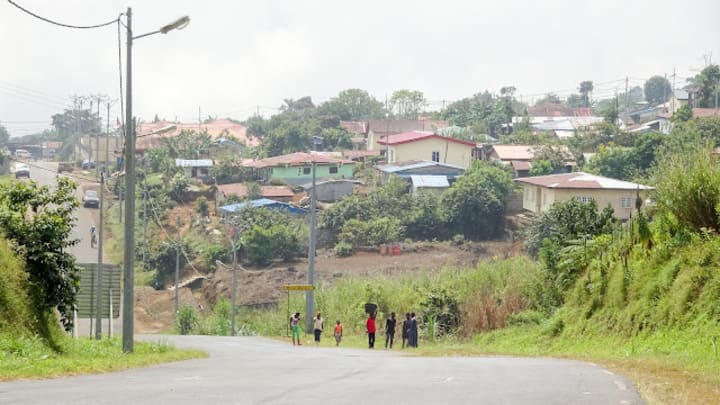Exploring Equatorial Guinea
A lovely country in Central Africa

Equatorial Guinea in Central Africa consists of the Rio Muni mainland and five volcanic offshore islands.

Its capital Malabo is a port city located on Bioko Island. Here visitors can admire Spanish-colonial architecture. Of special interest is the neo-Gothic, twin-towered Santa Isabel Cathedral. The dark green Casa Verde is a 19th-century house that was prefabricated in Belgium. The Equatoguinean Cultural Center has gallery and performance spaces.

Santa Isabel Cathedral is located on the west side of the Plaza de Espana. It is an impressive apricot-hued building and is considered the most beautiful in the country. It was consecrated in 1916 and is in the Gothic Revival style. The cathedral has two 40-meter-high towers and three naves.

Casa Verde is a house colored deep green and was prefabricated in Belgium in the early 19th century. It is a prominent landmark and highly regarded in Malabo.
Traveling About Equatorial Guinea

Monte Alen National Park has outstanding natural beauty. There are humid rainforests and the gushing, flowing course of the Uoro River. Visitors can enjoy trekking trails, personal safari packages and experience the wilds of Africa. Among the wildlife here are rare Goliath frogs, gorillas, elephants, crocodiles, chimpanzees, and more.

The town of Moca lies on the rugged volcanic ridges of the Moca Valley on the southern edge of Bioko. This is home to the people of the Buki tribe. Visitors come here to do hiking to cloud-topped peaks. There also are the craggy, monkey-dotted Cascades of Moca and two shimmering lakes – Biao and Loreta.

San Antonio de Ureca in and around this village the sand and pebble beaches are a haven for endangered sea turtles who swim in the Atlantic. The town has low-rise shakes and mud roads all sitting in the shadow of the mighty San Carlos Caldera. Here you can find gushing waterfalls and many hiking paths.

Luba is the departure point for logs that stream down the highland highways from the forest of Caldera de San Carlos in the Bioko highlands.

There is a lovely coastline and the shimmering sands of Arena Blanca. There are swaying coconut palms and salt-sprayed boulders.

Bata was once the capital of the country and is the largest city. The city has a lively nightlife. There are active fish and craft markets at the port.

Bata Cathedral is the main landmark.

Evinayong is the provincial capital of Centro Sur. It has a background of hills dotted with jungles. Palms line the streets and people reside in tin shacks. There is a colorful local market. This town is equidistant from the Monte Alen and Altos de Nsork National Parks.

Mbini is the gateway to the coastal region of Rio Muni and the winding channels of the mighty Benito River. This is the longest river in the country. Mbini is an ocean-side town and is a great place to taste the country’s famed seafood. You find resort hotels, sandy beaches, and the rising peaks of Monte Alen in the distance.

Annobon is an island sitting among the swells of the Atlantic Ocean. It has a history of Portuguese and Spanish colonialism. Visitors enjoy the Creole-style beachside capital of San Antonio de Pale. For wildlife lovers here are pods of humpback whales, rare Ojo Blanco birds on the cliffs, and baobabs hide lizards in the backcountry.

The town of Cogo is encompassed by the vast green wetlands of the Muni River. This is a peninsular town that juts out into the Atlantic Ocean on the extreme southern edge of the coast of Equatorial Guinea. You can see cobbled streets, Spanish churches, and pueblo houses giving a sort of European feel to the town.

Altos de Nosork National Park was established in 2000 and has untouched jungle and highland ecosystems. Hikers traversing the paths can see forest elephants, see the biodiversity of plants, look for mandrills and black-colored monkeys in the trees. There are even rare buffalo in the woods.

The Rio Campo Reserve is spread out over Fang tribal hamlets and wetlands near the Cameroonian border to the north.

You can find turtles, hippos, and Goliath frogs.
About the Creator
Rasma Raisters
My passions are writing and creating poetry. I write for several sites online and have four themed blogs on Wordpress. Please follow me on Twitter.






Comments
There are no comments for this story
Be the first to respond and start the conversation.